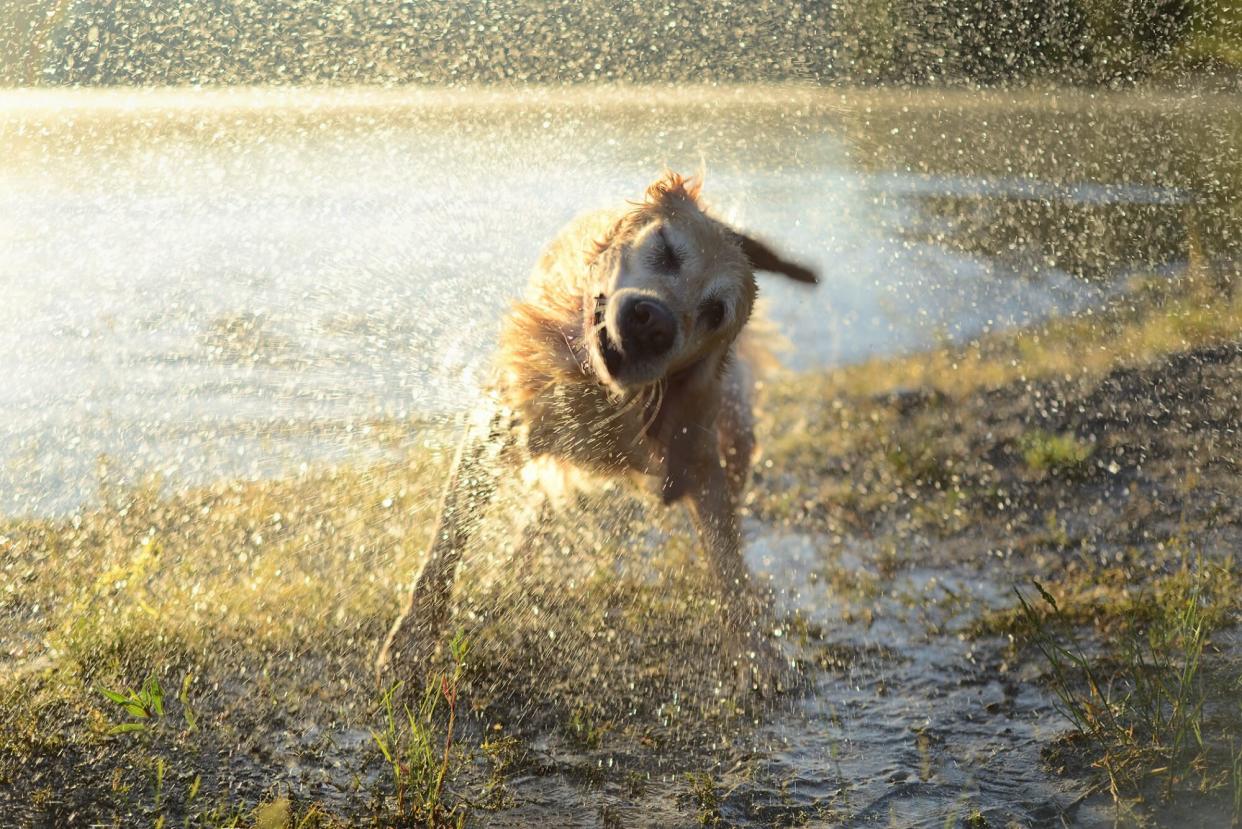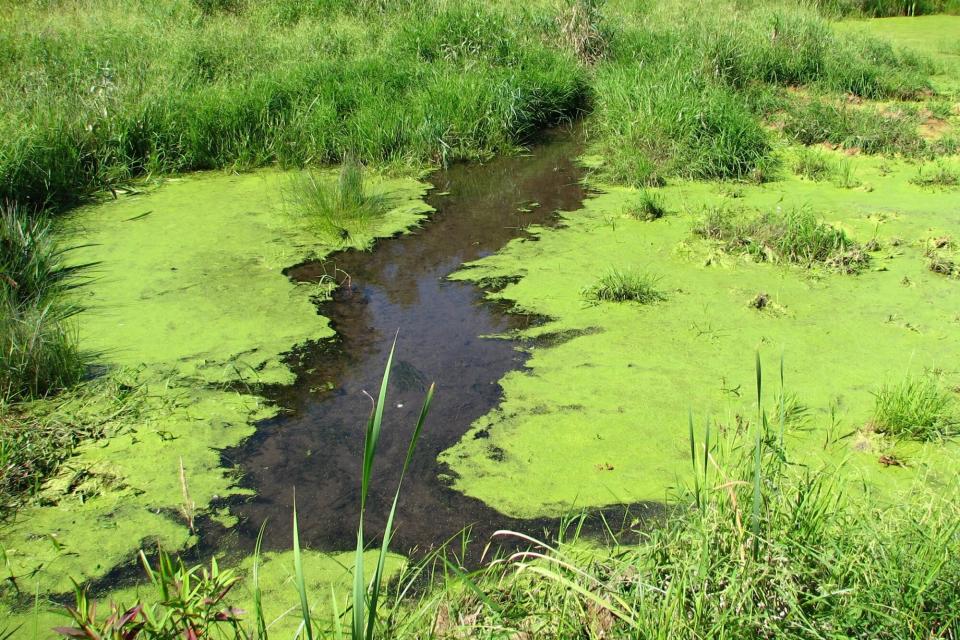Toxic Blue-Green Algae Can Be Fatal To Dogs. Here's How to Avoid It

Maya Karkalicheva / Getty
It's that time of year when we're tempted to let our dogs cool off with a quick splash around in the nearby lake or pond. While that's certainly a good, fun form of exercise for your pup, you need to be aware of the danger posed by toxic algae.
We're talking specifically about blue-green algae, which is sometimes neither blue nor green. It's extremely toxic to dogs, causing sickness or even death. That's what sadly happened last month to Bella, an 8-year-old dog in southern Florida whose owner said she ingested some of the algae in a canal.
"The water, the look of it was horrible. It was green. It was blue. It was nasty," Bella's owner, Pamela McAfee, told WPTV.
She added that Bella was sick the day before she suffered a "horrible" death. Any dog suffering like that is heartbreaking, so it's best to avoid the algae at all costs. Here's what you need to know about blue-green algae: what it is, where it's found, and how it can hurt your dog.

JFLAURIN / Getty
What Is Blue-Green Algae?
Well, it's not actually algae, for starters. That's according to the Minnesota Pollution Control Agency (MPCA), which clarifies that blue-green algaes are really types of bacteria called cyanobacteria. The bacterias can form blooms when the conditions are right in freshwater ponds and lakes: warm, still, and shallow water that's filled with plenty of nutrients from stormwater runoff and other organisms, according to the Lilly Center for Lakes and Streams. That's why you're more likely to see blooms when the calendar turns to summer.
Unfortunately, shallow, still water is one of the best places for our dogs to play. The Lilly Center says you should particularly watch out for still beaches and stagnant bays-particularly if those areas are downwind from the rest of the lake or pond. The wind can push the bacteria closer to the shoreline.
Most commonly, blue-green algae produces microcystin, which causes a number of adverse effects in us humans. Sometimes, though, the blue-green algae doesn't produce any toxins-not that you or your dog should risk it.
"Toxins are not always well-coordinated with the size of the bloom," Lilly Center researcher Adrienne Daeger says on the center's website. "It's hard to draw a direct correlation. When in doubt, stay out!"
RELATED: How to Teach Your Dog to Swim-Whether You're Headed to the Beach or Pool
What Does Blue-Green Algae Look Like?
According to the Lilly Center, the blue-green algae will almost look like it's part of the water. You won't see cells or roots. If it looks like some kind of aquatic plant or looks like it's yellow and dusty, then it's probably not the dangerous bacteria. However, it's never a bad idea to stay out of the water if you have any doubts.
As for its coloring, that's a bit of a mystery. Despite its name, the bacteria can appear to be red, orange, or brown along with green. It might look like pea soup or spilled great paint, the MPCA says. Plus, it might smell swampy.
There are ways to test to see if it really is blue-green algae-but why risk it?
How Blue-Green Algae Harms Dogs
This bacteria is very, very bad for your dog, and it can cause a myriad of issues because dogs will at some point ingest the water they're swimming in, according to the ASPCA. Here are several of the problems it can cause, including, sadly, death:
With all that in mind, be sure you check the body of water your dog plans to play in before letting him off his leash. And, as always, make sure you can get ahold of your veterinarian as quickly as you can in case your pup does get into tainted water.

